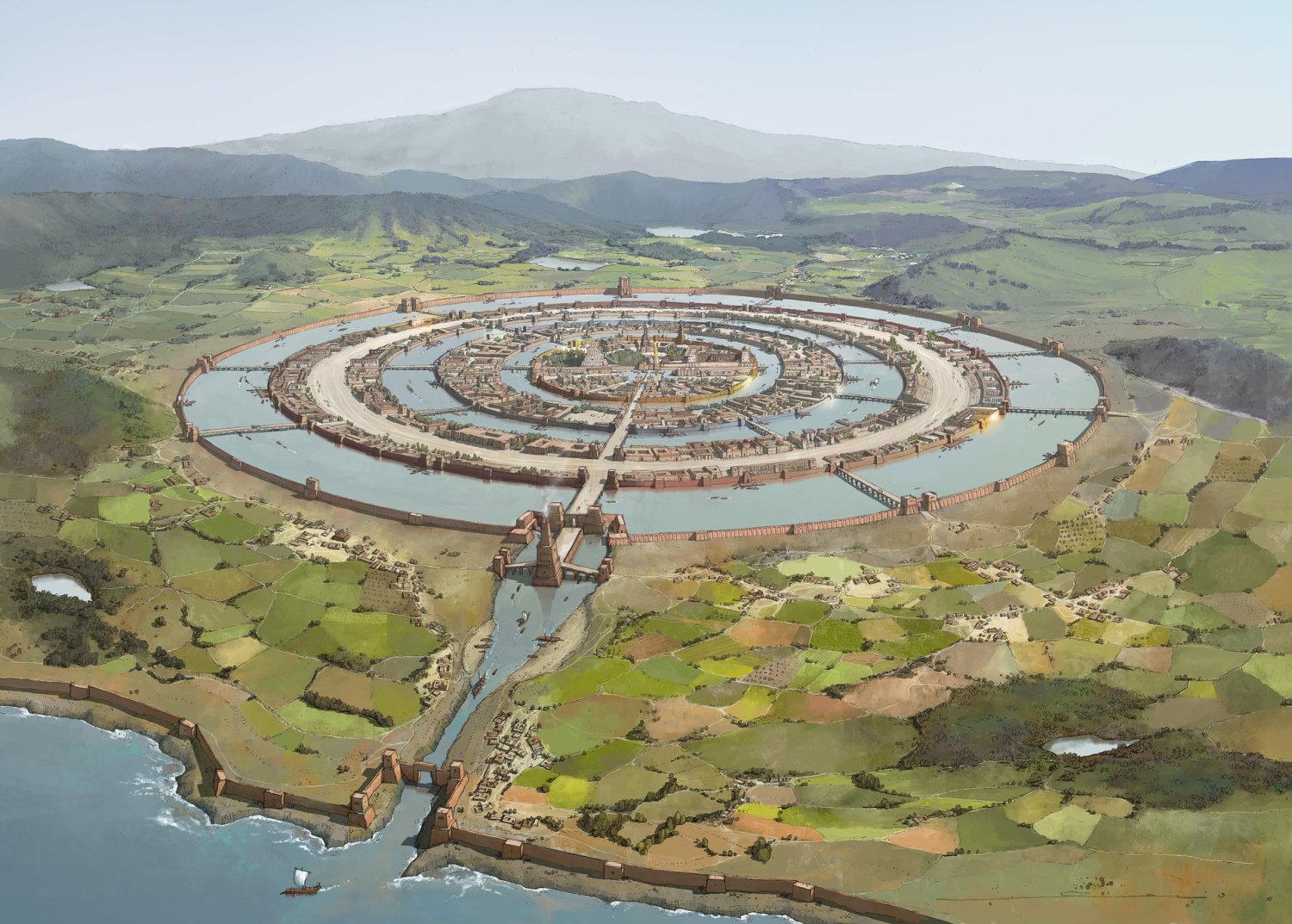
Could the ‘Eye of the Sahara’ Be the Lost City of Atlantis?
Image credit: Rocío Espín Piñar
While there is consensus among philologists and classicists regarding the story’s fictional character, there is still much debate as to what could have served as its inspiration. Plato is known to have freely borrowed some of his allegories and metaphors from older traditions, which led a number of scholars to speculate that Atlantis was inspired by Egyptian records of the Thera eruption, the Sea People’s invasion, or the Trojan War. Others, however, insist that Plato created an entirely fictional account, drawing loose inspiration from contemporary events such as the failed Athenian invasion of Sicily in 415–413 BC, or the destruction of Helike in 373 BC.
Nevertheless, there have been countless locations proposed over history for the lost city of Atlantis, including in or near the Mediterranean Sea (Sardinia, Crete, Santorini, Sicily, Cyprus, and Malta have all been considered as possible locations) or in the Atlantic Ocean (the Canary Islands and Madeira Islands are such examples).
More recently, in a viral, and rather convincing (at least for many), video published in September 2018, the YouTube channel Bright Insight claimed that the features of the Richat Structure, otherwise known as the Eye of the Sahara, perfectly match Plato’s description of Atlantis. The video received over 3.8 million views and the story was covered in Germany’s Der Spiegel, Vietnam’s Tien Phong, Business Insider Australia, and the main UK tabloids, among others. Bright Insight claimed that matching features included 5 concentric circles, the diameter (127 stadia or 23.5 km – about 14,5 miles), a waterway outlet to the south, salty groundwater everywhere except below the centerpoint, and mountains with waterfalls to the city’s north. Regarding the structure’s present location – elevated and away from any body of water – the YouTube channel pointed to the fact that lakes and rivers were once present across the Sahara, and that a gradual rise of the land of about 2.5 cm (0.8 inch) per year has since taken place.
While there is consensus among philologists and classicists regarding the story’s fictional character, there is still much debate as to what could have served as its inspiration. Plato is known to have freely borrowed some of his allegories and metaphors from older traditions, which led a number of scholars to speculate that Atlantis was inspired by Egyptian records of the Thera eruption, the Sea People’s invasion, or the Trojan War. Others, however, insist that Plato created an entirely fictional account, drawing loose inspiration from contemporary events such as the failed Athenian invasion of Sicily in 415–413 BC, or the destruction of Helike in 373 BC.
Nevertheless, there have been countless locations proposed over history for the lost city of Atlantis, including in or near the Mediterranean Sea (Sardinia, Crete, Santorini, Sicily, Cyprus, and Malta have all been considered as possible locations) or in the Atlantic Ocean (the Canary Islands and Madeira Islands are such examples).
More recently, in a viral, and rather convincing (at least for many), video published in September 2018, the YouTube channel Bright Insight claimed that the features of the Richat Structure, otherwise known as the Eye of the Sahara, perfectly match Plato’s description of Atlantis. The video received over 3.8 million views and the story was covered in Germany’s Der Spiegel, Vietnam’s Tien Phong, Business Insider Australia, and the main UK tabloids, among others. Bright Insight claimed that matching features included 5 concentric circles, the diameter (127 stadia or 23.5 km – about 14,5 miles), a waterway outlet to the south, salty groundwater everywhere except below the centerpoint, and mountains with waterfalls to the city’s north. Regarding the structure’s present location – elevated and away from any body of water – the YouTube channel pointed to the fact that lakes and rivers were once present across the Sahara, and that a gradual rise of the land of about 2.5 cm (0.8 inch) per year has since taken place.
Advertisements
15 August 2023
Advertisements



